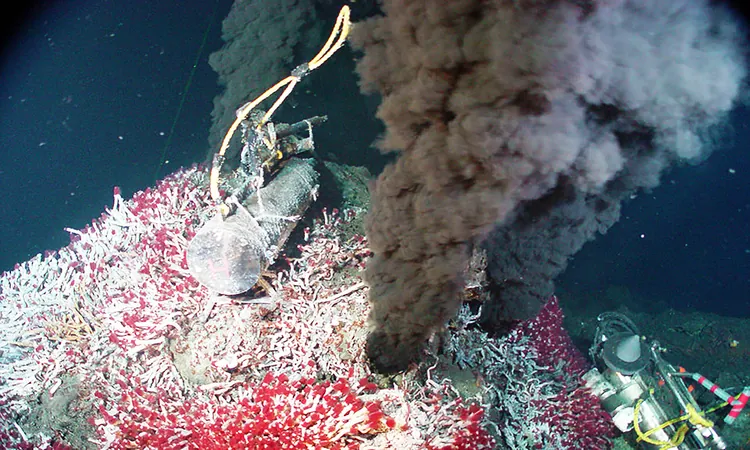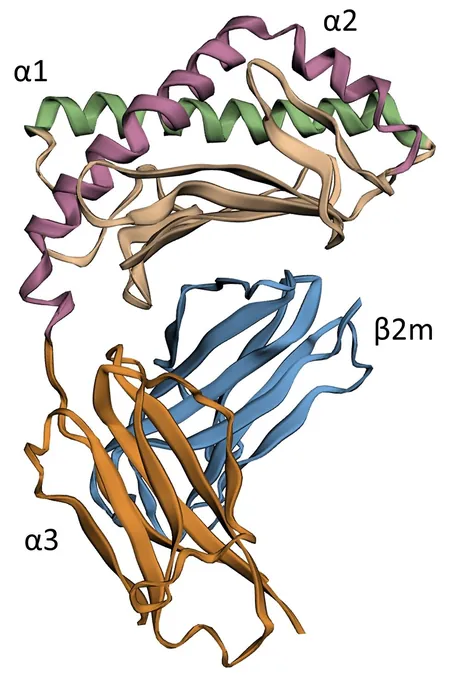
Deep-Sea Hydrothermal Vents: The Secret Origins of Life Unveiled!
2024-09-26
Recent groundbreaking research has unveiled remarkable clues surrounding the origins of life on Earth, centering around the fascinating realm of deep-sea hydrothermal vents. Scientists, led by Ryuhei Nakamura from the RIKEN Center for Sustainable Resource Science and The Earth-Life Science Institute in Japan, have discovered inorganic nanostructures that closely resemble the vital molecules necessary for life.
These nanostructures, found near the ocean floor, possess the ability to act as selective ion channels and can generate energy, which could potentially be converted into electricity. This revelation not only sheds light on the beginnings of life but also opens doors to innovative applications in sustainable energy harvesting.
The Birthplaces of Life
Hydrothermal vents, where mineral-rich seawater seeps deep into the Earth’s crust, is heated by magma before rising back to the surface, have long been theorized as possible origins for life. The interactions between the hot, mineral-laden water and the cold seawater can result in intricate chemical reactions that lead to the formation of solid structures known as precipitates.
These vents offer a stable environment with a rich supply of minerals and abundant energy - the perfect cradle for life's genesis.
Life Without Life Forms
One standout aspect of life on Earth is its reliance on osmotic energy, generated by differences in ion concentrations. Nakamura’s team focused particularly on serpentinite-hosted hydrothermal vents, where they uncovered complex mineral precipitates with layered structures made up of metal oxides, hydroxides, and carbonates.
Surprisingly, their findings revealed that osmotic energy, typically seen only in living organisms, can occur abiotically in geological settings, suggesting a possible pathway for the emergence of life.
Key Discoveries from the Mariana Trench
The pivotal samples for this research were collected from the Shinkai Seep Field in the Mariana Trench, at an astonishing depth of 5743 meters. Among these samples was a notable 84-cm-long piece of brucite, a mineral that revealed continuous columns forming nano-channels that enable fluid movement.
Further investigations showed that the precipitate's surface possessed variable electric charges, essential for processes akin to those found in living cells, such as neurons which utilize voltage-gated ion channels.
An Astonishing Parallel to Living Cells
The researchers conducted experiments that highlighted how these nanostructures mimic the behavior of living systems. When subjected to high concentrations of potassium chloride, the conductivity mirrored that seen in biological ion channels. Remarkably, selective nanopores were observed to allow specific ions through, underscoring their potential to function like miniaturized biological systems.
Nakamura emphasized the significance of these findings, declaring, “The spontaneous formation of ion channels has profound implications for understanding the origin of life, not only on Earth but potentially on other celestial bodies.”
Wider Implications for Industry and Energy
This newfound understanding extends beyond mere academic curiosity. In the field of sustainable energy, differences in salinity between seawater and freshwater are harnessed to create energy—a field known as blue-energy harvesting. Nakamura's insights into spontaneous nanopore structure formation could pave the way for innovative methods to improve the efficiency of energy generation from osmotic processes.
The research illustrates an intriguing connection between the origins of life and advances in nanotechnology studies. The mysteries of confined nanospaces in geological environments remain largely uncharted territory, promising further discovery and innovation.
Conclusion
Published in the prestigious journal Nature Communications, this research opens a new chapter in our understanding of life’s beginnings and its potential in sustainable energy alternatives. It's a tantalizing reminder of how much remains to be explored beneath the ocean's surface—a world teeming with secrets waiting to be uncovered!


 Brasil (PT)
Brasil (PT)
 Canada (EN)
Canada (EN)
 Chile (ES)
Chile (ES)
 España (ES)
España (ES)
 France (FR)
France (FR)
 Hong Kong (EN)
Hong Kong (EN)
 Italia (IT)
Italia (IT)
 日本 (JA)
日本 (JA)
 Magyarország (HU)
Magyarország (HU)
 Norge (NO)
Norge (NO)
 Polska (PL)
Polska (PL)
 Schweiz (DE)
Schweiz (DE)
 Singapore (EN)
Singapore (EN)
 Sverige (SV)
Sverige (SV)
 Suomi (FI)
Suomi (FI)
 Türkiye (TR)
Türkiye (TR)